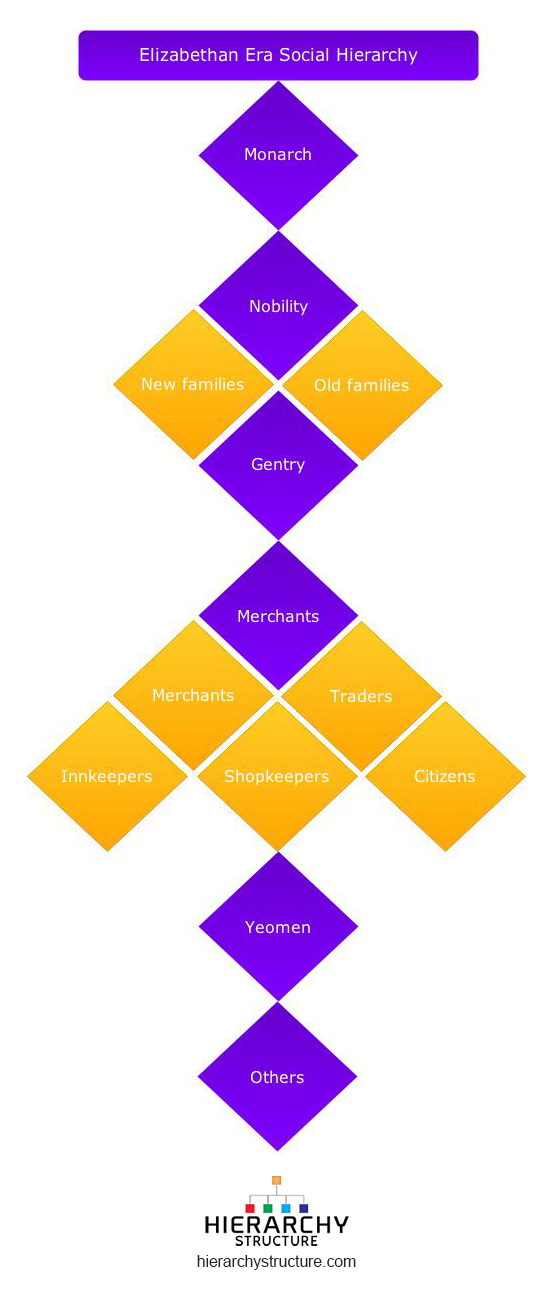Hierarchy in the Elizabethan era in England was very important, so much so that through it, one could understand important elements of history during those days. There was a proper social distinction in ranks and responsibilities of people those days and this particular era had its own set rules regarding the social structure which everyone had to follow.
These laws were made and imposed by the rulers and were mainly related to food, clothing, jewellery and furniture etc. These laws were imposed because it helped the rules define specific class structure and maintain it. To understand the social hierarchy of the Elizabethan era, you can go through the following given information:
 Monarch
Monarch
The highest in the hierarchy of the Elizabethan era was the Monarch. Elizabeth 1 was the one who led this era and was the last the 6th ruler of Tudor. The queen was considered to be the God’s representation on Earth during those days and ruled for over 45 years.
Nobility
The second level in the social hierarchy of the Elizabethan era was the Nobility who were those people that were rich, powerful and owned large households. Within this level, there was a subdivision between the new and the old families.
- New families-these were the protestant
- Old families-these were the Catholics
Gentry
The third rank in the social hierarchy of the Elizabethan era was the Gentry. The Gentry were considered to be the Aristocrats who owned small parts of land and households. These people possessed great wealth and some of them managed and owned large properties as well. Due to this reason, they were also often known as the Gentlemen.
Merchants
After Gentry, the Merchants occupied the fourth position in the social ladder of the Elizabethan era. The main and real growth in that era was considered to be within the merchants. This class also constituted of others like the traders, shopkeepers and those who produced goods for others to use.
- Merchants
- Traders
- Shopkeepers
- Innkeepers
- Citizens
Yeomen
The fifth rank in the social ladder of this era was taken by the Yeomen who were the rural equivalents of the citizens. They owned agricultural land and worked on it to produce food for the people of the era.
Others
The last rank was constituted by the servants, laborers and the peasants who had little social respects, responsibilities and rights. These people were poor, had no land of their own and worked for others.
Know more about Duke Royal Hierarchy
